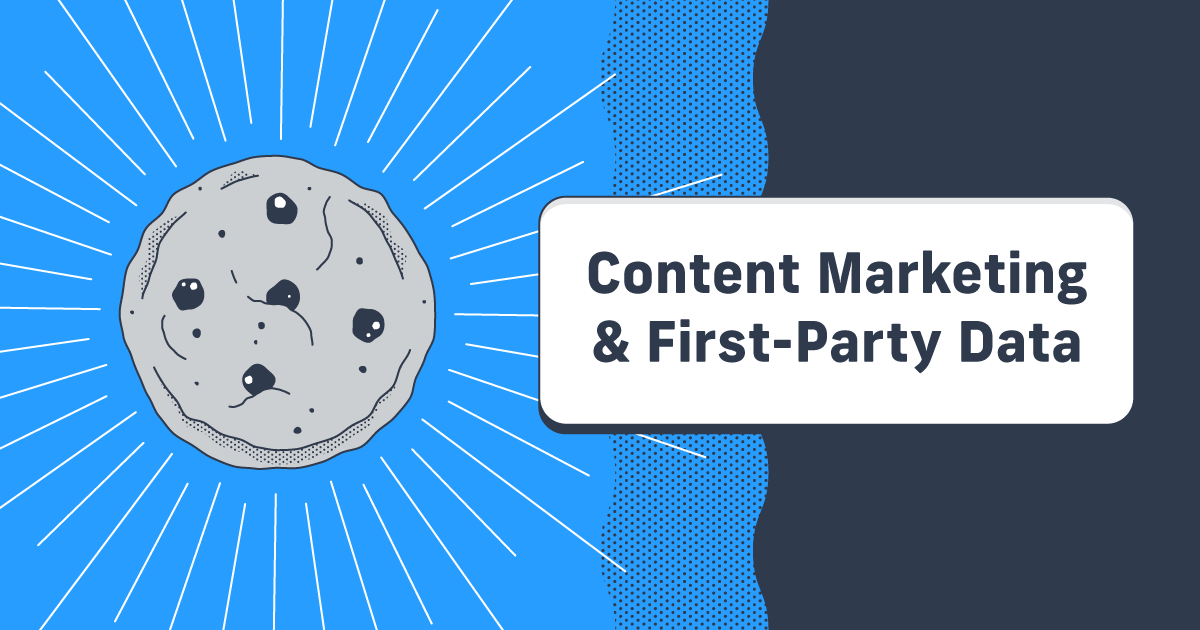Unlock Your Content Business Potential With User Data
If you’re a content entrepreneur, you know how important revenue is. You need products and services you can sell to make money and support your growing business. But earning sales isn’t easy and you need every advantage you can get.
That means building an audience of dedicated fans who love you and your brand. You need fans to get revenue, but how do you get the fans?
The answer is user data. Many new and novice entrepreneurs don’t appreciate the value of user data, but without it, your content business would be impossible.
Selling your books or online courses will generate revenue, but without user data, you won’t know who to market your books or classes to. The long-term success of your creator business is built on fostering a dedicated audience. Doing that requires careful, data-driven marketing based on user data you collect.
What Is User Data?
When someone visits your blog or landing pages, purchases a product or service from your site, or enters their email to subscribe to your email list, you can automatically collect some data. That might include their location, the browser they’re using, and more.
You’ll also have an opportunity to ask them for personal information. This user data can take a number of forms. The most common include:
- Name
- Email Address
- Mailing Address
- Global Location
We’ll cover some methods you can use to ask users for their data later.
First, you need to appreciate why user data is vital to your business’s success. Here’s an example I found on r/selfpublish that illustrates why user data is key to success:

People need to be told you have a book for sale. And not just anyone; you need to speak to the fans who have shown they’re interested in you and your products. Running ads can work, but without data to target the ads, you’re unlikely to get the results you hope for.
This holds true for any product or service you might offer. No matter how good your book is or how enlightening your course might be, no one will show up (much less pay) for something from a complete stranger.
You need to build a following if you want to sell your books. And you need user data if you want to build a following. That user information will help you find customer insights (when do your fans like to buy? Which platforms are they buying from?) and will help you better target audiences similar to your fans.

The Benefits of Capturing User Data
The information you gather about your audience has two main uses:
- To improve your Content
- To guide your Marketing
How To Use User Data To Improve Your Content
Imagine you’re a food blogger who writes about healthy snack alternatives. Now let’s say you recently noticed a surge in email followers. You could just buy yourself a fancy dinner to celebrate your newfound popularity.
Or you could examine the data. Which page and email sign-up form did these new users come from? Maybe one of your blog posts or videos is winning a top spot on Google. Or maybe some content you made is being referenced in another blogger’s content (called a backlink).
To take the example another step, let’s imagine the new followers are coming from another blogger who linked to your content. This other blogger writes specifically for readers with dietary restrictions.
With this new information, you can look for personalization strategies like dedicating some of your new content to healthy snacks that people with dietary restrictions can eat. Personalized content is a cornerstone of digital marketing—and it’s impossible to achieve without customer data.
Likewise, if you see content performing well in search, you’ll learn about the keywords your content is ranking for. Understanding how search engines see you and your content is valuable market research. And there are likely numerous additional, niche pieces of content you can create to reinforce those keywords.
How To Use User Data To Guide Your Marketing
As you develop your brand and grow your product offering, you’ll need to carefully watch your website traffic and how that figure relates to the number of conversions (like email signups or sales) you’re earning. Learning how people navigate your website and your content (called a customer journey) helps you improve the user experience and allows you to find ways to increase conversions.
The information you gleaned about your content is useful here too. Knowing which posts, books, or videos are most popular with your audience tells you which pieces of content deserve some extra marketing. As you work on improving and sharing your most popular content, you’ll start to see that your fans might not like all the exact same content.
User Segmentation
This is another huge marketing opportunity your customer data creates. You can segment your audience based on what they like and what they’re interested in. When you’re providing content similar or complementary to the content you know they’ve enjoyed in the past, you’ve got a better chance that they’ll take the desired action you present—whether that’s signing up for a mailing list, enrolling in a course, or buying your book.
When you segment users based on their past interactions or demographic data, you can remarket highly-targeted content and ads at them. An example of this is the way you’ll see specific product ads on Instagram after you’ve spent some time searching and investigating similar items. Those companies are using data about the people buying their products and targeting ads at you because you’re in a similar demographic to those previous buyers.
You’ll also be able to apply these segments when creating emails for your followers. If you’ve got a book coming out, be sure to send a unique email to the segment of users who bought the previous book—maybe they get the email ahead of a general announcement or you offer a limited-time discount. Use the information you have to create segments and then reward those users!
Optimizing for Conversion
Finally, there’s the idea of conversion optimization to consider. This is marketing-speak for looking closely at how many people come to your site or content and how many of those people take a desired action (so, how many of them ‘convert’). Watching how your users interact with your content and making small changes (like moving a call to action button or changing the images on a page) can lead to real-time improvements in the number of your fans who buy from you or subscribe to your emails.

Your Free Lulu Account
Create a Lulu Account today to print and publish your book for readers all around the world
How to Capture User Data
There are a lot of different ways to get data about your users. Analytics programs like Google Analytics allow you to learn about web pages visited on your site, but you get very little personal information from these tools.
It’s also key that you are sending your fans and followers to your own website. Whether it’s buying a book or reading a blog, you won’t be able to get the broad data that Google Analytics offers if you’re on a retailer’s site.
You don’t want to build your creator business on rented space, do you? Driving all your followers to visit your site and buy from your site ensures you have the best opportunity to gather information about them.
Once you’ve got people on your site, the best way to gather information about them is to ask for it. How you ask can take a few different forms. Here are the four best suited to creators like you:
Lead Generation Forms
Sometimes, all you need to do is show someone a great piece of content and ask them to join your mailing list. You can also offer more valuable content (like an ebook) in exchange for their email address and name. This is called lead generation and it’s a terrific way to gauge interest while growing your audience.
Email Marketing Referrals
Many newsletters will have a section near the bottom encouraging you to share the email with your friends. Here’s an example from The Tilt:

You get a unique code they can track. Once you’ve referred enough of your friends, The Tilt will send you some swag! This is a powerful way to allow your existing fans to market for you by sharing the content they love within their personal network.
Be sure to use marketing automation to send unique, personalized emails based on the actions of your fans. If someone signs up for your emails from a referral link, send them a special welcome and encourage them to take action. Based on what they do, you’ll have even more user data to work with.
Social Media Subscribers
Based on the platform, you can learn a variety of things about your followers. Demographic information defines broad segments of users with one or a few similar traits. Remember the Instagram example above? Demographics are a vital part of social media marketing and one of the more interesting data points you can gain.
Demographic data is particularly useful for targeted ads and content. If you’re writing about a specific topic within your niche, you might put extra effort into ensuring people interested in that specific topic see your work. That’s the power of tracking your audience demographics on social media.
Each platform will feature different demographics, but as you build a community, you’ll which demographics you and your fans fall into.

Sales Data
And of course, there is the information you get when someone buys a product or service from you. Be sure to ask anyone who purchases from you to join your email list. You should also be on the lookout for unexpected surges in orders from specific locations. It could mean a local to that area liked your book and heavily recommended it.
This is one of the important reasons to use Lulu Direct to sell your books through your own website. You can fully automate the sales and fulfillment process, giving you more time to examine your newly-gathered user data and create awesome content for your fans!
Final Thoughts on User Data
To effectively grow any content business, you need to gather and make use of your users’ data. To do that you need to have a website with analytics tracking and lots of ways for people to share their information with you. People want to have personal connections to the creators they follow. You can only establish that kind of connection, is if you understand your audience.
Make it easy for anyone visiting your pages to provide their data. If you’re asking someone for their personal information, your audience needs to understand the value you’re adding. Put your audience first. Offer them valuable content, incentivize them with a discount, or exclusive access to your community with premium content.
The easier and more valuable it is to provide data, the more likely people will be to do so.
You also need to be transparent about how you will use their data. No one wants to be spammed or have their data sold.
The results are worth the work though. Careful use of user data will improve your content and marketing efforts while leading to additional sales (and revenue) as well as increasing your brand awareness.





